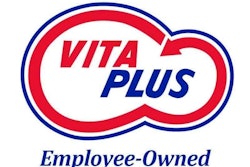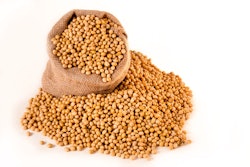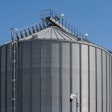
Differing views on how to define transitions exist. Some define it as the flux that exists between two fixed states of being.George Stigler, an American economist, defined it differently. He said, “a transition period is a period between two transition periods.”
I think those of us who live and work in proximity to markets would probably see the usefulness of Stigler’s definition. While this may be true, thetransition between crop years in late summeris a distinctive transition period in that it is, if nothing else, usually tricky to navigate. While it can be tricky, it is manageable.
As end-users jockey for coverage through the transition, the volatility in basis increases. We see this in years when carries exist, but more in years when the market structure is flat to inverted, as they have been this year. Lower stocks-to-use numbers create flat to inverted markets, price volatility and spread volatility. Navigating volatile markets requires awareness.
Here are four areas to watch when navigating this type of crop transition period.
1. Opportunity awareness
In a carry market, the market rewards you for having along cash position. A general rule of thumb is that the basis follows spreads. When end users are not getting enough grain, they raise basis to fill their needs, and this is your opportunity to sell if you have not made sales into the deferred periods.
Opportunities come and go more gradually than you see with inverted markets and the carry spreads support your long cash position.
Conversely, in an inverted market, it wants all the grain now. Sales opportunities tend to have volatile basis swings. They penalize you for being late to the sale but pay you to be proactive in your sales plan.
Knowing what values, you are willing to sell and letting your buyers know where you are may be your key to getting in on the front end of sales. In this market environment, you don’t want to get your back up against the wall on first notice day, as the market will penalize you for being long cash when rolling in the inverses.
Taking advantage of opportunities to make profitable sales will help you stay even, but you need to be aware of logistical constraints.
2. Logistical awareness
It would be nice to ship all the grain when the market calls for it. Unfortunately, there are only so many trucks you can load an hour, only so many hours in the day and only so many days to haul. The later in the transition you get, the harder this can be to manage. When working through transitional periods, you will need to know your logistical abilities and constraints.
Managing them well will help you manage your position well.
3. Position awareness
Whether the market is at a carry or an inverse, the answer to position accumulation is the same. As you accumulate bushels, make sure you are selling along the way to be empty for the new crop season. As earlier stated, you are rewarded for accumulating the cash position in a carry market and need to be aware of logistical constraints.
In an inverse market, your goal is to stay close to even or go short-the-basis to avoid being penalized when rolling positions. This is easier said than done, especially in transition periods. It requires your attention. Checking your old crop position frequently may save you from accumulating a long-the-basis position while unaware.
I’ve heard many times of merchandisers aggressively selling and having a hard time getting even or short. Some of those times, they swear they sold enough only to find out more keeps coming at them. Setting time aside for routine checks of positions will help prevent this from happening to you.
You need to be aware of your overall standings and the impact of spreads on them.
4. Spread awareness
I mostly focused on the need to manage your old crop position. I would be remiss if I didn’t touch on several different types of spread risk, you’ll want to be aware of.
- Old crop spread relationships to get through the summer
- Old crop to new crop spread
- Any position you are starting to accumulate for the new crop deferred delivery slots.
Old crop spreads perhaps are the trickiest. You are thinking about your logistics, sales opportunities, and accumulated position, but you must also consider how buyers will move through the summer futures month.
Take beans, for example. More times than not, buyers will move through the July-August-Sep futures differently. Not only that, but sometimes they switch only to switch back days later. If nothing else at this time, you need to be very aware of the futures month basis is related to daily.
Eventually, you will have to roll whatever old crop position you have to new crop, so the old crop new crop spread will have to be considered. That is not the only old crop new crop spread situation to be aware of, though. You also need to be aware of any old crop-new crop slippage you may have.
Whether you are hedging with complete contracts or minis, the chances of some slippage between the crops are almost a guarantee. It pays to line up your old crop cash positions against old crop futures and new crop.
This will reveal any slippage, and you will want to remedy it as soon as possible. Regardless of the type of market structure, having unintentional spread risk can create significant losses if the market moves against you.
More of a side note to the previous points of spread awareness is the new crop spreads. Whether you practice proactively pre-spreading or not, you can develop some unintentional new crop spread risk, too, when you buy a little here and there. Make sure each delivery period cash position has an equal and opposite offsetting futures position or that it agrees with the pre-spreading you’ve done.
Remember, crop transition is just a transition between two other transitions. These spreads are still trying to figure out where they need to be, and the changes can cause some financial discomfort if not appropriately managed.
Markets may be the best example of how the only constant changes. Thankfully, that is the case, as these changes allow us to capture financial opportunity while being price neutral. Each crop year has its share of transition and opportunity.
Remember what I said at the beginning, “while the transition between crop years in late summer is a distinctive transition period in that it is, if nothing else, usually tricky to navigate.”
Be aware and manage it. It may steal the income you worked so hard to gain through the trading season if you don't.





















